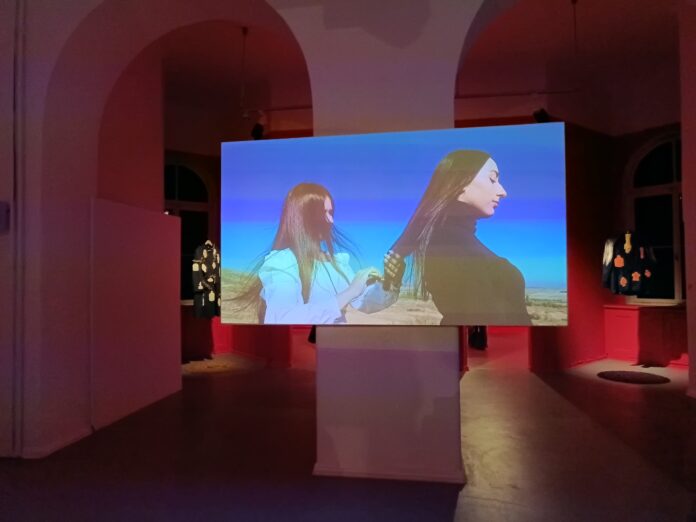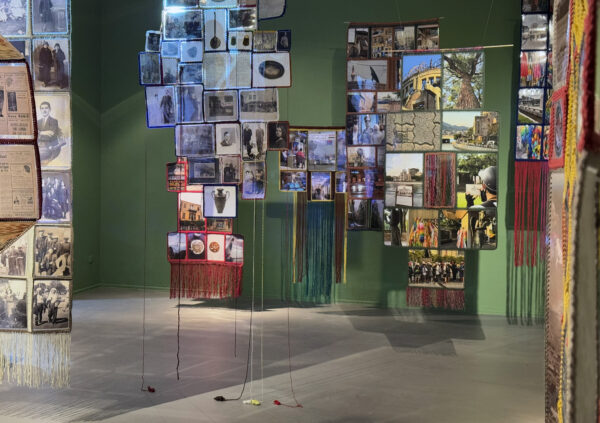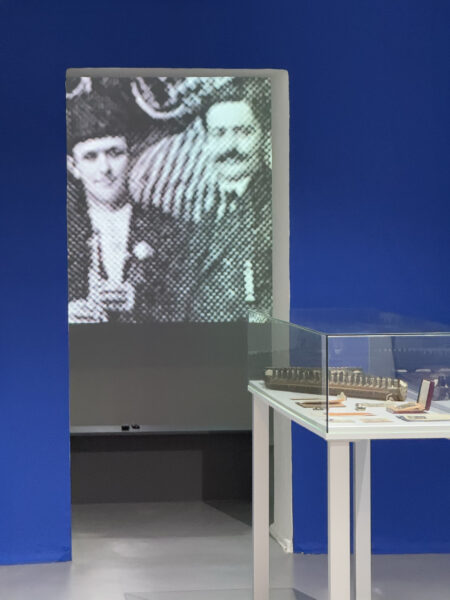
"Care"
Silvina Der Meguerditchian:
An Artist Who Cares
by Muriel Mirak-Weissbach
the Armenian Mirror Spectator
BERLIN, FEBRUARY 13, 2025— There is no mystery behind the fact that Armenian art, especially in the diaspora, bears the imprint of the genocide: directly, as in representational figurative art or literature; obliquely, as in musical reflections; or symbolically, as in abstract conceptual impressions.
An exhibition that has just opened in Berlin features the works of an artist who explores all three modes of expression, in depth and beauty. Silvina Der Meguerditchian, born in Argentina where her grandparents had found a new home, has lived in Berlin since 1988. Her experience encompasses multiple language cultures and her art speaks in several genres, motivated by the quest for identity and intercultural harmony.
The current show, which opened on January 31 and runs until April 6, is hosted by the Kunstraum Kreuzberg/Bethanien. This “art exhibition space” in the Berlin district of Kreuzberg is a former hospital now dedicated to contemporary artistic and cultural exhibitions.
Curators of the exhibition entitled, “Those Who Take Care of Us,” are Barbara Höffer and Lusin Reinsch.
The exhibition, which unfolds in thirteen interconnected rooms, displays many new creations of the prize-winning artist and is her most comprehensive show thus far. It is organized in three themes, Resonances, Memory, and Care.
The first features music, that of the kanun, presented through installations, videos, and the instrument itself to be seen and heard, not only in the Armenian context but internationally. It is as if the kanun, itself, migrates and spreads its melodies. Enormous hanging collages composed of personal items, photographs, and traditional textiles recall personal and collective past experiences, expulsion from the homeland, migration, loss, and new interrelationships.

“Memory”
Der Meguerditchian explores the opposing and complementary themes of past and present, personal family histories, customs, and languages. The assembly of artistic creations embraces a network of “generations, cultures, and lifestyles, suggesting a global responsibility – a connection that extends far beyond the visible,” as the exhibition catalogue describes it.
This thematic space recalls the remarkable achievements of the Houshamadyan project, for which Der Meguerditchian has served as artistic director since 2010. The project (www.houshamadyan.org) is dedicated to documenting Armenian life before the genocide, by assembling photographs, archives, written records, and artefacts preserved by descendants to reconstruct what life was like in Kharpert or Trabzon, Arapgir or Diarbekir: what did the homes and churches look like, how did the people live, what occupations and pass-times did they have, what did the local dress look like, the dances, the food? It is a project that continues the process of remembering, in which individual family documents contribute to remodeling the vast mosaic of Armenian economic, religious, and cultural life in the Ottoman Empire.
One can clearly see how Der Meguerditchian’s experience with Houshamadyan is interwoven in her activity as an artist. This is evident also in the second theme, Memory, which highlights cultural identity and the “texture of identity” as expressed in works composed of photographs, and objects. Photographs taken by the artist show us Beirut and Aleppo, Hiroshima and Berlin, cities that have lived through past catastrophes, and are reliving them in the present. Berlin, which has known destruction and reconstruction, is also a city of migrants, among them, the artist herself.
Der Merguerditschian’s compositions seem to juxtapose the contrasting realities while at the same time encouraging their coexistence. To overcome the otherness in a society transformed by migration requires empathy, human warmth, and compassion.

“Resonances”
Thus, the importance of the third theme, Care. Here, the person-to-person relationship comes to the fore, again depicted in traditional as well as contemporary forms. We see a video of two women, one combing the other’s long silken hair. We see heavy “Healing Coats” which offer protection and strength. Although the Armenian historical experience provides the impetus and material for Der Meguerditchian’s works in this exhibition, one cannot escape the relevance it has on our current world. In a period in which many governments and their frightened people are responding increasingly with fear to the continuing flows of migrants, and migrants who are desperately seeking to escape war, starvation, and genocide are met with closed borders, armed police, and internment camps, the human message that Der Meguerditchian is transmitting through art is worthy of note and praise.